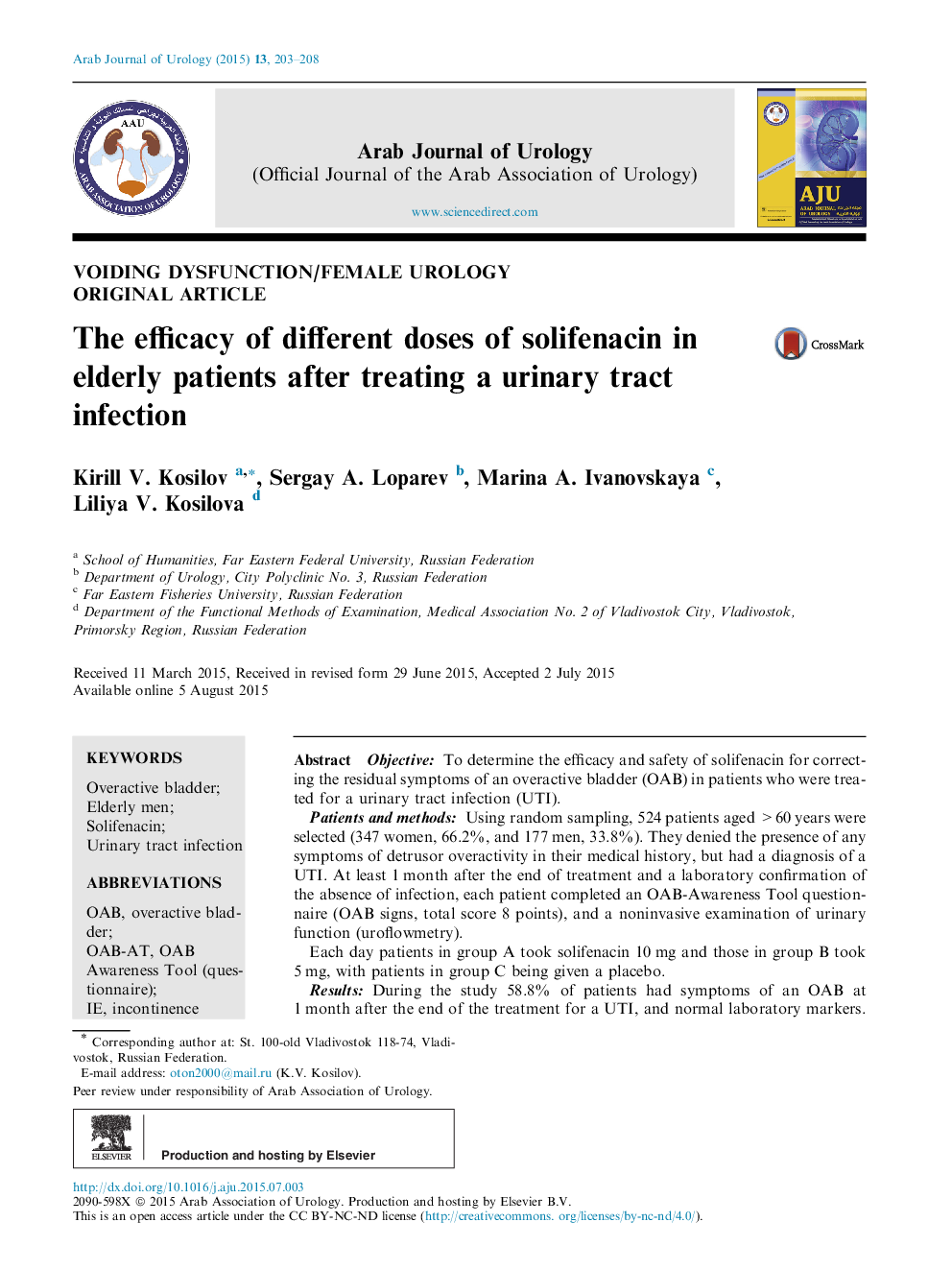| Article ID | Journal | Published Year | Pages | File Type |
|---|---|---|---|---|
| 4268012 | Arab Journal of Urology | 2015 | 6 Pages |
ObjectiveTo determine the efficacy and safety of solifenacin for correcting the residual symptoms of an overactive bladder (OAB) in patients who were treated for a urinary tract infection (UTI).Patients and methodsUsing random sampling, 524 patients aged >60 years were selected (347 women, 66.2%, and 177 men, 33.8%). They denied the presence of any symptoms of detrusor overactivity in their medical history, but had a diagnosis of a UTI. At least 1 month after the end of treatment and a laboratory confirmation of the absence of infection, each patient completed an OAB-Awareness Tool questionnaire (OAB signs, total score 8 points), and a noninvasive examination of urinary function (uroflowmetry).Each day patients in group A took solifenacin 10 mg and those in group B took 5 mg, with patients in group C being given a placebo.ResultsDuring the study 58.8% of patients had symptoms of an OAB at 1 month after the end of the treatment for a UTI, and normal laboratory markers. During treatment with the standard and higher dose of solifenacin, within 8 weeks most variables of the condition of the lower urinary tract reached a normal state or improved.ConclusionPatients aged >60 years who had been treated for a UTI have a high risk of developing symptoms of an OAB. Solifenacin in standard doses is an efficient and safe means of managing overactive detrusor symptoms after a UTI.
